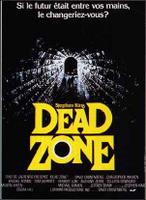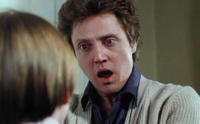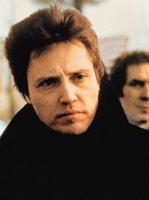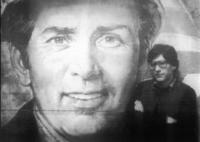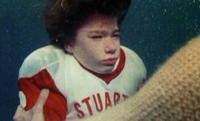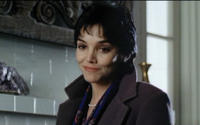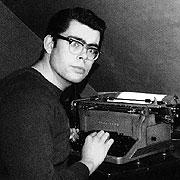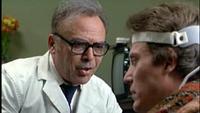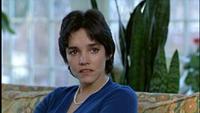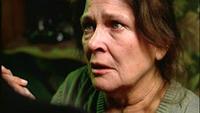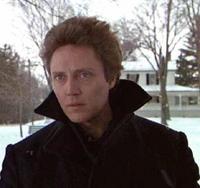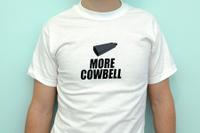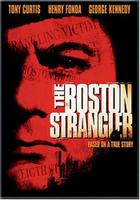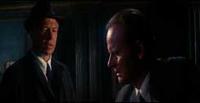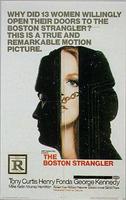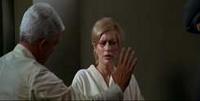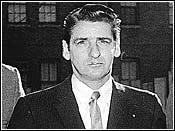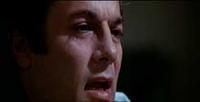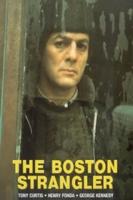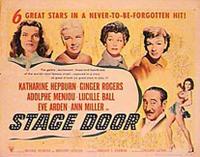 Pamela's Nite
Pamela's NiteRotisserie chicken, potato salad, heirloom tomato salad with homemade blueberry pie
Sparkling Dialogue: "Jean: When does your baggage get here?
Terry: I'm expecting the bulk of it in the morning.
Jean: We could leave the trunks here and sleep in the hall. There's no use crowding the trunks.
Terry: I don't know what we're going to do when the wolfhounds arrive. I hope you don't mind animals.Jean: Oh, not at all. I've roomed with a great many of them before.
Terry: Yes, I can see that.
Jean: (after smelling Terry's ermine wrap) Fresh kill?
Terry: Yes, I trapped them myself.
Jean: Do you mind if I ask a personal question?
Terry: Another one?
Jean: Are these trunks full of bodies?
Terry: (pointing to two of the trunks) Just those, but I don't intend to unpack them.
Jean: Well, I was just thinking if the room got too crowded, we could live in the trunks.
Terry: Yes, that's a good idea. You don't mind helping me unpack. Oh, I beg your pardon, you're not the maid, are you? (Terry drapes unpacked articles of clothing over Jean's arm.)
Jean: Oh, that's quite all right. What a lovely dress! Whipped up at home by loving hands.
Terry: Every stitch.
Jean: Do you cook too?
Terry: Nothing fancy. Just plain home-cooking.
Jean: I'll bet you could boil a terrific pan of water."
Slant Magazine: Like Leo McCarey, La Cava didn't like to stick to a script, and he took his improvisational methods radically far in Stage Door. For two weeks, he had his actresses rehearse on the Footlights Club set, and he engaged a stenographer to take down what they said during breaks. This loose chat was then incorporated into the film (Arden often took the lines no one else would touch). La Cava had no use for the source material, an anti-Hollywood play by George S. Kaufman and Edna Ferber which preached the superiority of the legitimate theater, and so he started from scratch and used what he had: his one-of-a-kind cast.
Stage Door is the defining film about the 1930s working girl. However, the women who lounge around the Footlights Club don't do all that much working, which means that money is always tight. When snooty Linda (Gail Patrick) sweeps into the main room in the opening scene, Rogers' Jean Maitland marches in and peels the silk stockings right off her legs. "I didn't go without lunch to buy you stockings," she says, and when Linda calls her a "little hoyden" and a "guttersnipe," Jean gives her a shove. The other girls watch this catfight jubilantly, throwing out the first of an endless series of bright remarks.
As James Harvey points out in his book Romantic Comedy, it isn't what they say that is important but the way that they sound. The sound design of Stage Door and its overall aural chaos is enough to make your head spin, with overlapping dialogue that might throw even Robert Altman. It's as if these girls are terrified of silence, and if someone isn't pitching in a one-liner, another girl will laugh, sing, or simply throw out a nonsense noise. Harvey says that watching Stage Door is like "going to wisecrack heaven." Hell, it's a wisecrack symphony. And Stage Door is a truly democratic movie: every girl gets a shot at a crack, not just the stars.
Wikipedia on Ginger Rogers: Her entertainment career was born one night when the traveling Vaudeville act of Eddie Foy (Bob Hope would play Foy in The Seven Little Foys) came to Fort Worth and needed a quick stand-in. She would enter and win a Charleston contest and then hit the road on a Vaudeville tour. Her and Lela would tour for four years. During this time Lela divorced John Rogers. When Ginger was 17 she married Jack Culpepper, another dancer on the circuit. The marriage was over within months and Ginger went back to touring with her mother. When the tour got to New York City, she stayed, getting radio singing jobs and then her Broadway theater debut in a musical called Top Speed, December 25, 1929. Within two weeks of opening in Top Speed she was hired to star in Girl Crazy by George and Ira Gershwin. Fred Astaire was hired to help the dancers with their choreography, and he briefly dated Ginger. Her appearance in Girl Crazy made her an overnight star at the age of 19. In 1930 she was signed with Paramount Pictures for a seven-year contract.
Rogers would soon get herself out of the Paramount contract and head with her mother to Hollywood. When she got to California, she signed a three-picture deal with Pathé, three forgettable pictures. After getting bit parts for singing and dancing for most of 1932, in 1933 she made her screen break-through in 42nd Street with Warner Brothers. She would then make a couple more forgettable films with RKO. But in the second of those, Flying Down to Rio, she again met up with Fred Astaire.She is most remembered as Fred Astaire's romantic interest and dancing partner in a series of ten all-singing all-dancing Hollywood musicals, but her acting career spanned over thirty years. Her first roles were in a trio of short films made in 1929 — Night in the Dormitory, A Day of a Man of Affairs, and Campus Sweethearts. In 1939, she played opposite David Niven in Bachelor Mother.
In 1941 Ginger Rogers won the Academy Award for Best Actress, for her starring role in 1940 's Kitty Foyle. In 1940 she purchased a 1000-acre ranch between Shady Cove and Eagle Point, Oregon along the Rouge River, just north of Medford. The ranch, named the 4-R's (for Rogers' Rogue River Ranch), is where she would live, along with her mother, when not doing her Hollywood business, for 50-years. The ranch was also a dairy, and would supply milk for the war effort during World War II, to Camp White. Rogers loved to fish in Rogue every summer. She sold the ranch in 1990, and moved to Medford.
She was a right-wing Republican politically, and lived for much of her life with her mother, Lela Owens McMath Rogers (1891–1977), a Christian Scientist (like Ginger) who was a newspaper reporter, scriptwriter, movie producer, one of the first women to enlist in the Marine Corps, and a founder of the Motion Picture Alliance for the Preservation of American Ideals. Ginger's mother "named names" to the HUAC, and both mother and daughter were staunchly anti-Communist. This extremely close mother-daughter relationship -- Ginger's mother even denied Ginger's father visitation rights after their divorce -- has been proffered to explain, in part, Rogers's history of marital disappointments and childlessness.
Forgotten Master: Gregory La Cava is probably the greatest classic Hollywood director still in need of rediscovery. While for many people 1930s Hollywood means Chaplin, Hitchcock, von Sternberg, Hawks, Ford, and Lubitsch, with passing nods to Borzage and McCarey, La Cava — who created several of that decade's most enduring classics — has been unjustly forgotten, misrepresented as simply a clever studio director whose authorship even of masterpieces like Stage Door and My Man Godfrey was overshadowed by everything from the genre (screwball comedy) to the actors (strong personalities like Katharine Hepburn, William Powell, Ginger Rogers) to the writers (George S. Kaufman and Dorothy Parker among them). The man W. C. Fields called the best comedy mind in Hollywood — no small compliment coming from Fields — is virtually forgotten today.
Whatever headaches were created by his refusal to follow approved scripts were usually forgotten by the time production was underway. By the time the films were released to popular and critical acclaim, all was forgiven — temporarily. Much of what is worthwhile in La Cava's films can be traced to his working methods: constant rewrites, overlapping dialogue, improvisation. Actors, particularly, responded to his approach, claiming this method gave a fresh, spontaneous quality to their performances.
La Cava differentiated between intellectual actors who had difficulty being “real” — he called them “dressed-up puppets” — and “real actors” who could forget themselves and fully engage with the character they played. Andrea Leeds, who played the suicidal actress in Stage Door, was one of many who appreciated the director's approach. In Stage Door, she said, “Gregory La Cava had all of us girls in the movie come to the studio for two weeks before the shooting started and live as though we were in the lodging house itself. He rewrote scenes from day to day to get the feeling of a bunch of girls together — as spontaneous as possible. He would talk to each of us like a lifelong friend. That gave us a feeling of intimacy.” Others on the set of Stage Door said he had a secretary eavesdropping on the girls and writing down their comments, some of which he incorporated into the film. La Cava’s careful work with Katharine Hepburn on this film rescued her from the dreaded status of “box-office poison,” and Ginger Rogers, not always charitable in her comments on those she worked with, labeled him “masterful.”
Producer Pandro Berman, who worked on many of La Cava's films, talked about the chaos that existed on the director's sets. “He amazed me, and I gave him complete freedom. I went through a terrible ordeal on the picture [Stage Door], not knowing where we were going, what we were doing tomorrow, how the script would turn out. The picture aged me a hundred years every day we worked. Every single person on our boards here and in New York wanted me to fire Greg. It was pure hell!"
Katherine Hepburn: On her first outing with the Hollywood press corps after the success of A Bill of Divorcement, Hepburn talked with reporters who had invaded her and her husband's cabin aboard the ship City of Paris. A reporter asked if they were really married; Hepburn responded, "I don't remember." Following up, another reporter asked if they had any children; Hepburn's answer: "Two white and three colored."
Off-set, Hepburn, who had begun to attract significant press attention, would wear overalls and ratty tennis shoes instead of glamorous clothing fit for a starlet, prompting RKO executives to confiscate her overalls when she refused to change her wardrobe. After RKO refused to return her clothing, Hepburn followed through with her threat to walk across the studio lot in her underwear in full view of several cameras. Embarrassed, the RKO executives confiscated all the photographs and gave her back her overalls.
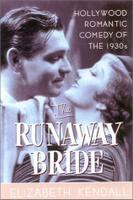 Elizabeth Kendall's fantastic book The Runaway Bride has more on this film and genre. Kendall's book is one of the few that successfully discusses both the making of the films from the filmmaker's immedaiate perspective and also talks about what was happening in the culture at large and how the films reflected and drove the enormious shifts in relationships between men and women that came with the depression. Sadly, the romantic comedy seems to be a truly dead form at the moment, the "romantic comedies" that are made today have as much relevance to the life we're really living as Kabuki theater.
Elizabeth Kendall's fantastic book The Runaway Bride has more on this film and genre. Kendall's book is one of the few that successfully discusses both the making of the films from the filmmaker's immedaiate perspective and also talks about what was happening in the culture at large and how the films reflected and drove the enormious shifts in relationships between men and women that came with the depression. Sadly, the romantic comedy seems to be a truly dead form at the moment, the "romantic comedies" that are made today have as much relevance to the life we're really living as Kabuki theater.Anyway, back to Stage Door. According to Kendall, the film went into production with an unfinished script and the assumption that either Rogers or Hepburn would end up with Adolphe Menjou. But as the shoot progressed (sounds like they shot more or less in sequence) it became clear that neither of them could have a romantic relationship with the Menjou -- and that the real story was between the women. And so the film became more or less a very modern "buddy picture."
As Stuart would say, "you couldn't get away with that today." And more's the pity.
